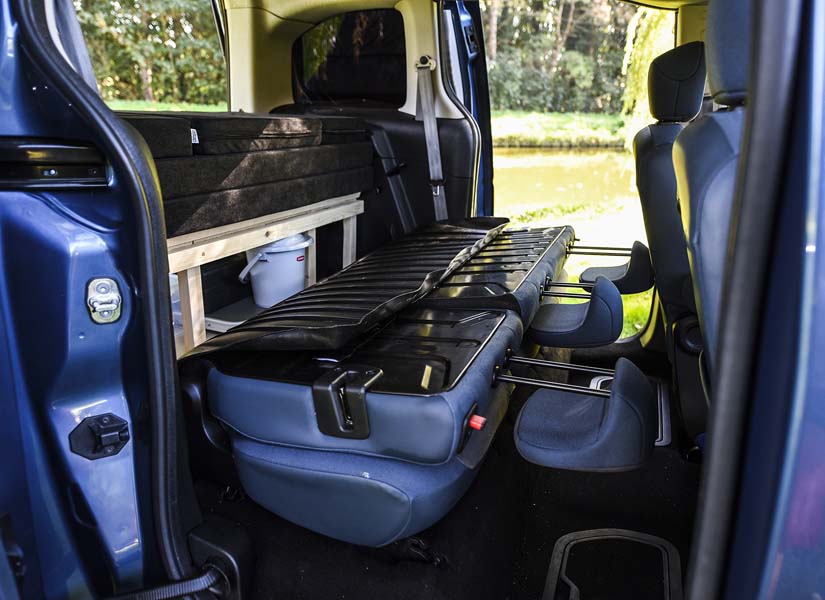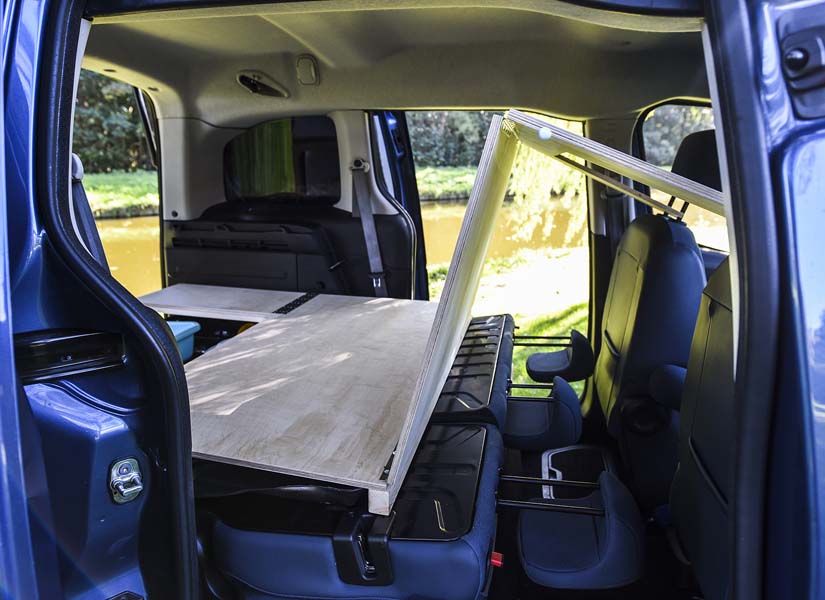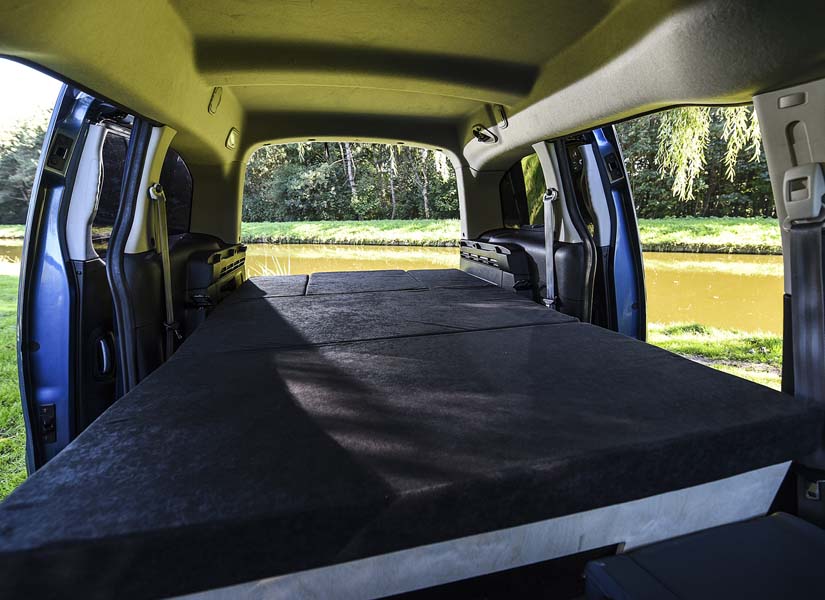How does the Simple camper van conversion module work?
Turning your car into a functional camper van (and back into a car again) is faster than reading these instructions!
No tools required for installation
Installation time of less than 5 minutes
Simple to follow instructions
Telephone support available Mon-Fri
We recommend reading the full instructions here prior to using your module to ensure correct installation. You can also find a download link at the bottom of this page so that you can save or print the instructions for easy referral.
All Simple camper van conversion modules are supplied fully assembled and ready to use. No vehicle modifications or permanent fixings are required and installation takes less than 5 minutes. Simply lift the module out of the packaging and straight into the boot of your vehicle and you’re ready to go!
For everyday use, the camper van conversion module neatly folds into the boot of your car so that you can easily use all 5 seats as normal.
If you have any questions regarding installation of your Simple camper van conversion module then please get in touch. Telephone and email support is available from 10am-4pm Mon-Fri.
Installation instructions.
1. Configuring your vehicle ready for installation.
Before installing the camper van conversion module in your vehicle, you will need to spend a few minutes configuring the front and rear seats to maximise internal space to allow the module to unfold. Once you’ve completed the process a few times, you will be able to configure your vehicle in a matter of seconds!
Start by lifting the front head restraints up (2-3cm is enough) so that the struts are exposed. Next, slide the front seats as far forward as possible on the runners – if the seats are difficult to slide, sit on each seat in turn and use your body weight to loosen the slide mechanism by moving the seat backwards and forwards a few times. Finally, tilt the back rest on each front seat by using the circular winder or lever on the side of the seat to a position just off vertical, so that each seat leans towards the front of the vehicle. The front seats are now configured. You now need to configure the rear seats.
For Citroen Berlingo MK1 & MK2, Citroen Nemo, Fiat Doblo MK1 & MK2, Fiat Qubo, Ford Tourneo, Peugeot Bipper, Peugeot Partner MK1 & MK2, Renault Kangoo MK1 and VW Caddy vehicles just fold the back rests forward so that they rest on the seat base (see the image below). You will also need to lift the rear head restraints up (excluding Kangoo and Caddy) – this lowers the position of the folded seat backs, allowing the module to sit flat when unfolded.
For Citroen Berlingo MK3, Mercedes Citan, Opel Combo Life, Peugeot Rifter, Renault Kangoo MK2, Toyota Proace City Verso and Vauxhall Combo Life vehicles with the “Magic Flat Floor”, you just need to fold the rear seats into the floor.
2. Installing the module.
Carefully lift the module into the boot of your vehicle, noting the orientation. The wooden brace running across the back of the module should face towards the front of the vehicle as shown in the image. Our Simple range of modules vary in weight from 26-34kg and although they can be installed by one person, we advise that 2 people should install the module. Our LUX range of modules vary in weight from 40-46kg and we advise that 2 people should install the module.
All Modules except XL and Caddy Maxi Life – The module should be positioned as close to the boot entrance as possible, rather than pushed forward into the vehicle, while still being able to close the bootlid without it hitting the module. Close the bootlid slowly and carefully and if it hits the module, push the module a few centimetres further into the boot .
XL Module – Push the module into the boot so that the gap between the module base and the plastic trim at the boot entrance is ~200mm.
Caddy Maxi Life Module – Push the module into the boot so that the gap between the module base and the plastic trim at the boot entrance is ~475mm. The module should line up with the seat runners, if fitted, for the third row of seats.
We recommend removing the table before lifting the camper van conversion module into your vehicle. This lightens the module and avoids the table sliding out and sustaining damage during lifting. When the table is re-installed, the plastic stop on the underside of the table must point towards the front of the vehicle – this prevents the table from sliding under the hinge.

3. Folding out the module.
Ensure that the module is positioned centrally across the width of the vehicle boot so that the module can be unfolded without hitting the boot side panels. Carefully unfold the module so that it rests on top of the folded rear seats taking care not to drop the module panels, or to catch the module panels on the rear seat brackets, as they are unfolded.
4. Configuring the module in seating mode.
Unfold the module further and rest the support leg against the front head restraint struts. The angle of the module back rest can be adjusted by tilting the front seats further backwards or forwards.
Lift up the table and insert the table leg into the conic connectors. The table can be rotated to make access from the boot entrance easier.

5. Configuring the module in sleeping mode.
Fold the module flat by resting the support leg on the floor behind the front seats.
You can create a completely flat sleeping platform by changing the angle of the support leg and/or sliding the module forwards or backwards slightly within the vehicle.
If your vehicle is fitted with a central arm rest between the front seats, this should be in its lowest position to avoid the arm rest interfering with the module support leg.
You may also need to remove any floor mats from behind the front seats. The height of the support leg has been carefully designed to provide a completely flat sleeping platform without floor mats or other items artificially increasing the height of the vehicle floor.
We recommend sleeping with your feet facing the front of the vehicle. This allows the module to better support your weight and also allows much easier entry and exit using the side doors of the vehicle. Additionally, taller users can stretch out by placing their feet between the front seats of the vehicle when lying down.

Please note that when you are driving the vehicle, the camper van conversion module must be folded and stored in the boot of the vehicle.



